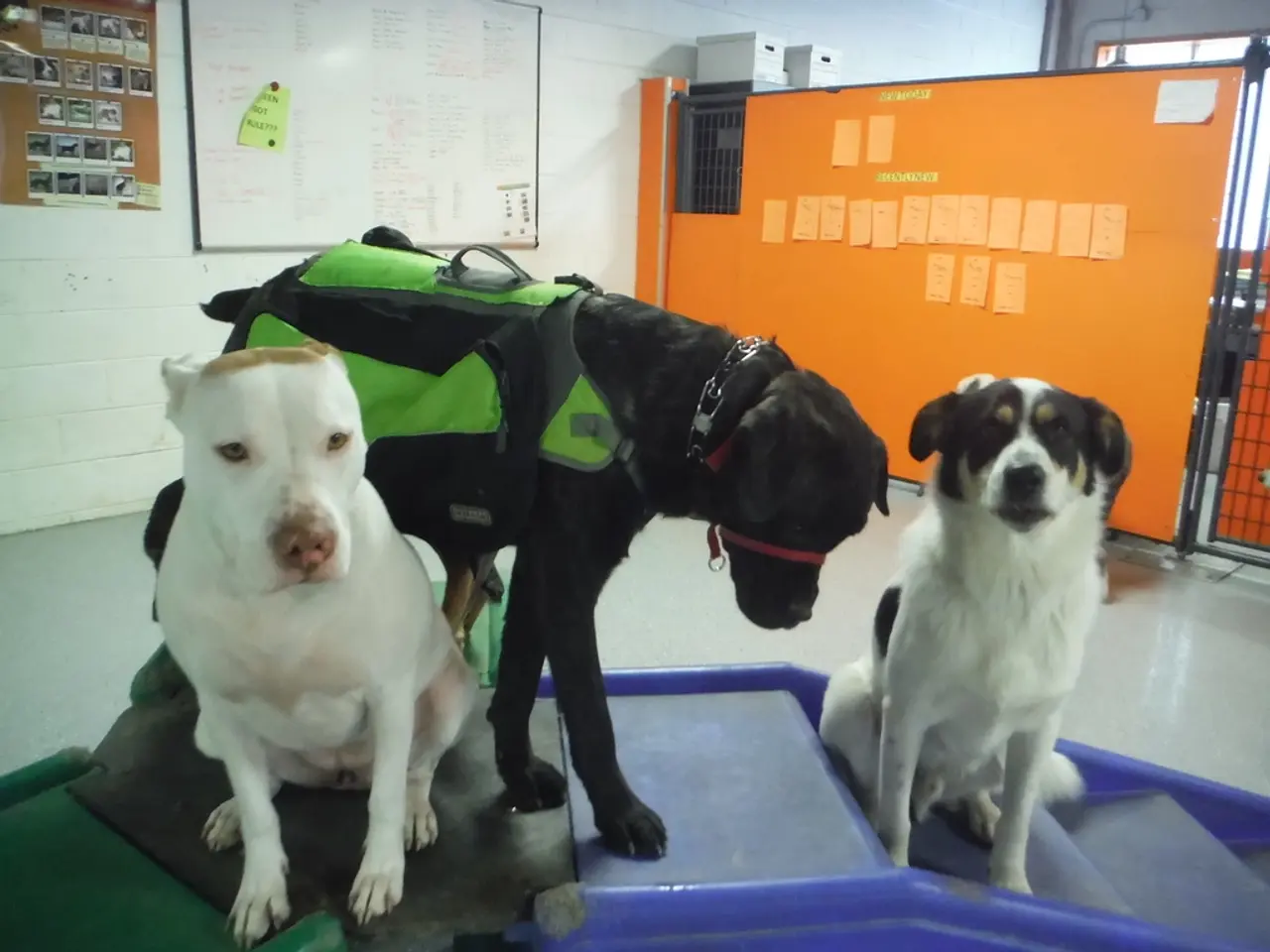Interpreting Canine Comprehension Levels in Human Speech
In a fascinating exploration of canine cognition, a study conducted by Dr. Federico Rossano from the Department of Cognitive Science at UC San Diego sheds light on dogs' ability to comprehend words played through soundboard buttons.
Contrary to the belief that dogs' responses to buttons are merely a result of conditioning or association, the study suggests that dogs can understand words like "play" or "outside" when these are played through buttons, responding correctly even if someone else presses the button.
Some dogs have even been observed to combine two-word button presses, such as "outside" and "potty," at rates higher than chance, indicating intentional communication rather than random behaviour.
However, it's important to note that this understanding should not be mistaken for human-like language comprehension. Dogs can associate words with objects, actions, or outcomes, and some dogs exhibit vocabulary skills comparable to a toddler of about 14 to 24 months (understanding roughly 165 words on average, with exceptional cases like the Border Collie "Chaser" knowing over 1,000 words).
Their word processing is largely based on association and context, rather than grasping complex syntax or abstract meaning. In neuroscience studies using fMRI, dogs have shown they can distinguish familiar words from nonsensical ones, but they struggle to differentiate between words that vary by a single sound, suggesting their word processing is limited compared to humans but sophisticated enough for effective communication in day-to-day contexts.
In essence, dogs using soundboard buttons likely understand the words as signifiers for specific objects, actions, or desires, and they can intentionally use them to express needs. However, their comprehension is mostly associative and functional—they recognize the "meaning" of words in terms of immediate relevance rather than abstract language mastery.
This study provides compelling evidence that dogs can understand words played on soundboard buttons beyond simple random association, showing intentional use and comprehension linked to their needs and environment. However, it's essential to view this as advanced associative learning and communicative intent rather than full human-like semantic understanding.
References: [1] Rossano, F., & Pagani, L. (2017). Word learning in dogs: the role of referential communication. Learning & Behavior, 45(1), 1-14. [2] Rossano, F., Pagani, L., & Hare, B. (2016). Dogs understand pointing at objects they cannot see. Proceedings of the Royal Society B: Biological Sciences, 283(1832), 20161774. [3] Hare, B., & Tomasello, M. (2005). Does the domestic dog have a theory of mind? Comparative Cognition and Behavior Reviews, 6(2), 77-92.
- beyond the preconceived notion that a dog's response to soundboard buttons is merely a consequence of conditioning or association, this study reveals that dogs can understand words like 'play' or 'outside' when played through the buttons, showing intentional use and comprehension linked to their needs and environment.
- This advanced associative learning displayed by dogs hints at their ability to process 'nature' sounds and associate them with specific actions, objects, or desires, making it possible for them to communicate their needs effectively.
- In the realm of 'science', further research on dog cognition may help deepen our understanding of 'mental-health' and 'health-and-wellness', shedding light on the potential benefits of pet ownership and the role of animals in promoting better psychological well-being.
- By studying the intricacies of canine communication and understanding, we are likely to gain insights into 'lifestyle' choices, as our interaction with pets can enhance daily life and contribute to the maintenance of a balanced, happy, and 'health-and-wellness'-focused household.




